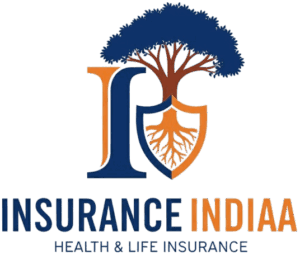First party insurance and third party insurance. It is important for every vehicle owner to understand these differences. Let’s look at the intricacies of first and third party car insurance to understand how they differ.
Whenever car insurance is discussed, you often come across these two terms. First, first party insurance and second, third party insurance. However both provide coverage in the event of accident or damage. But they vary greatly in scope, benefits, and cost. It is important for every vehicle owner to understand these differences. Let us look at the intricacies of first and third party car insurance to understand how they differ.
What is Car Insurance
Car insurance is an important aspect of owning a vehicle. It provides financial protection against unexpected circumstances like accidents, theft or damage. Generally, there are three parties involved in an insurance policy:
First Party – In an insurance contract, the person who buys the insurance is called the first party. The first party is the one who claims for the insurance and pays the insurance premium so that he can get the benefits.
Second Party – The second party is the insurance company that is providing insurance for the vehicle. So, it pays for the damage or loss in the event of an accident. The first party also pays the premium amount for the insurance to the second party.
Third Party – Third party can be any person other than the first and second parties. This can be any person who is affected at the time the First Party was driving the vehicle which was insured by the Second Party.
Within the scope of car insurance, there are two primary categories: first party insurance and third party insurance. Both serve a different purpose and provide benefits to the policyholders.
First Party Car Insurance
First party insurance is often referred to as comprehensive insurance. A policy that covers damage caused to the insured vehicle and its occupants. It offers a wide range of coverage including collision damage, engine protection, theft, vandalism and natural disasters.
A key feature of first party insurance is the coverage of medical expenses for the insured driver in the event of an accident. This aspect ensures that medical bills are taken care of, reducing the financial burden on the policyholder.
Additionally, the first party insurance includes Road Side Assistance, Rental Car Indemnity, Zero Depreciation, Engine Protection, Refund on Invoice Amount, NCB Protection and coverage for personal belongings inside the vehicle. Such benefits may be included. These additional benefits add to the overall value of the first party insurance policy.
However, it is important to note that first party insurance premiums are usually higher than third party insurance due to the broader coverage provided. Vehicle owners should keep in mind their individual needs and budget while opting for first party insurance.
Third Party Car Insurance
Third party insurance, also known as liability insurance. It covers damages and injuries caused to third parties involved in an accident. Unlike first party insurance, which primarily focuses on the safety of the insured vehicle and its occupants, third party insurance covers external parties affected by the insured vehicle.
The main purpose of third party insurance is to provide financial protection against legal liabilities arising from accidents. This includes compensation for bodily injury and property damage, and may also include legal fees incurred due to a lawsuit filed by an affected third party.
Third party insurance offers limited coverage compared to first party insurance. It meets the legal requirements for vehicle owners in many regions. In some countries, it is mandatory to have third party insurance to drive and operate a vehicle on public roads.
One of the important benefits of third party insurance is that it is cheaper. Premiums for third-party policies are usually lower than first-party insurance, making it an attractive option for budget-sensitive individuals. However, it is important to consider the tradeoffs between coverage and potential out-of-pocket expenses in the event of an accident.
Key Differences between First Party Insurance and Third Party Insurance
Scope of Coverage: First party insurance provides comprehensive coverage for the insured vehicle and its occupants. Which includes collision damage, theft and medical expenses. In contrast, third party insurance provides limited coverage for damages and injuries caused to a third party involved in an accident.
Cost: First party insurance premiums are usually higher than third party insurance due to the broader coverage provided. Third-party insurance is more affordable, but offers limited coverage. Which mainly focuses on legal liabilities.
Legal Requirements: While first party insurance is optional in most cases. At the same time, third party insurance is often mandatory for vehicle owners to comply with legal regulations. Driving without adequate third party insurance can lead to penalties and legal consequences.
Additional Benefits: First party insurance policies often include additional benefits like roadside assistance, rental car reimbursement and coverage for personal belongings. Third party insurance policies generally do not provide these additional benefits.
Key Points
In short, the difference between first party insurance and third party car insurance lies in the scope of coverage, cost and legal requirements. First Party Insurance provides comprehensive protection for the insured vehicle and its occupants. Whereas third party insurance focuses on covering damages and injuries caused to a third party. It is important for vehicle owners to understand these differences when choosing the right insurance policy for their needs and budget.
While first party insurance provides comprehensive coverage and peace of mind, third party insurance provides a cost-effective solution that meets legal obligations. Ultimately the choice between first and third party insurance depends on personal preferences, risk tolerance and budget considerations. By considering the advantages and disadvantages of each type of insurance, vehicle owners can ensure adequate protection against unexpected situations on the road.
